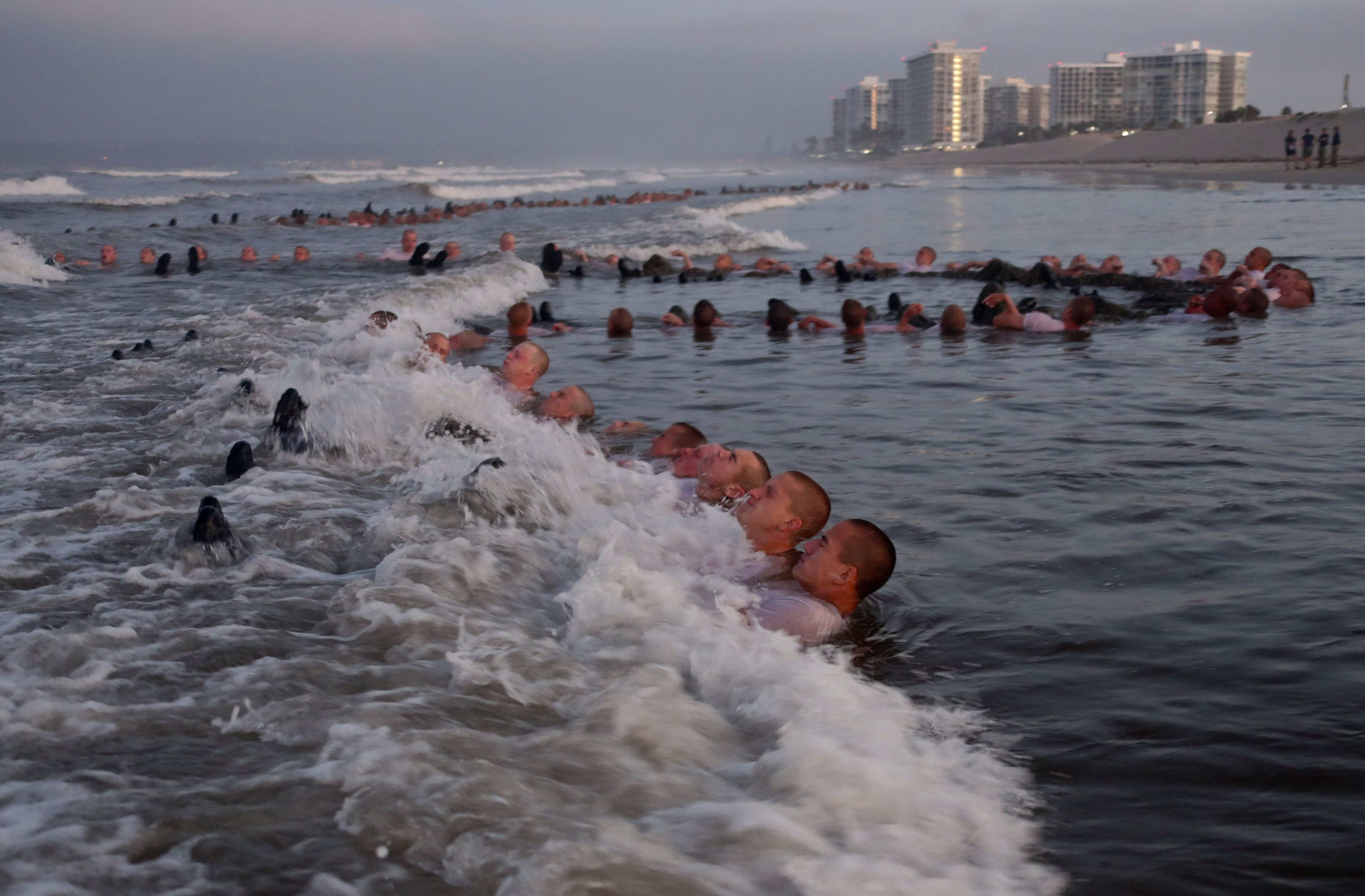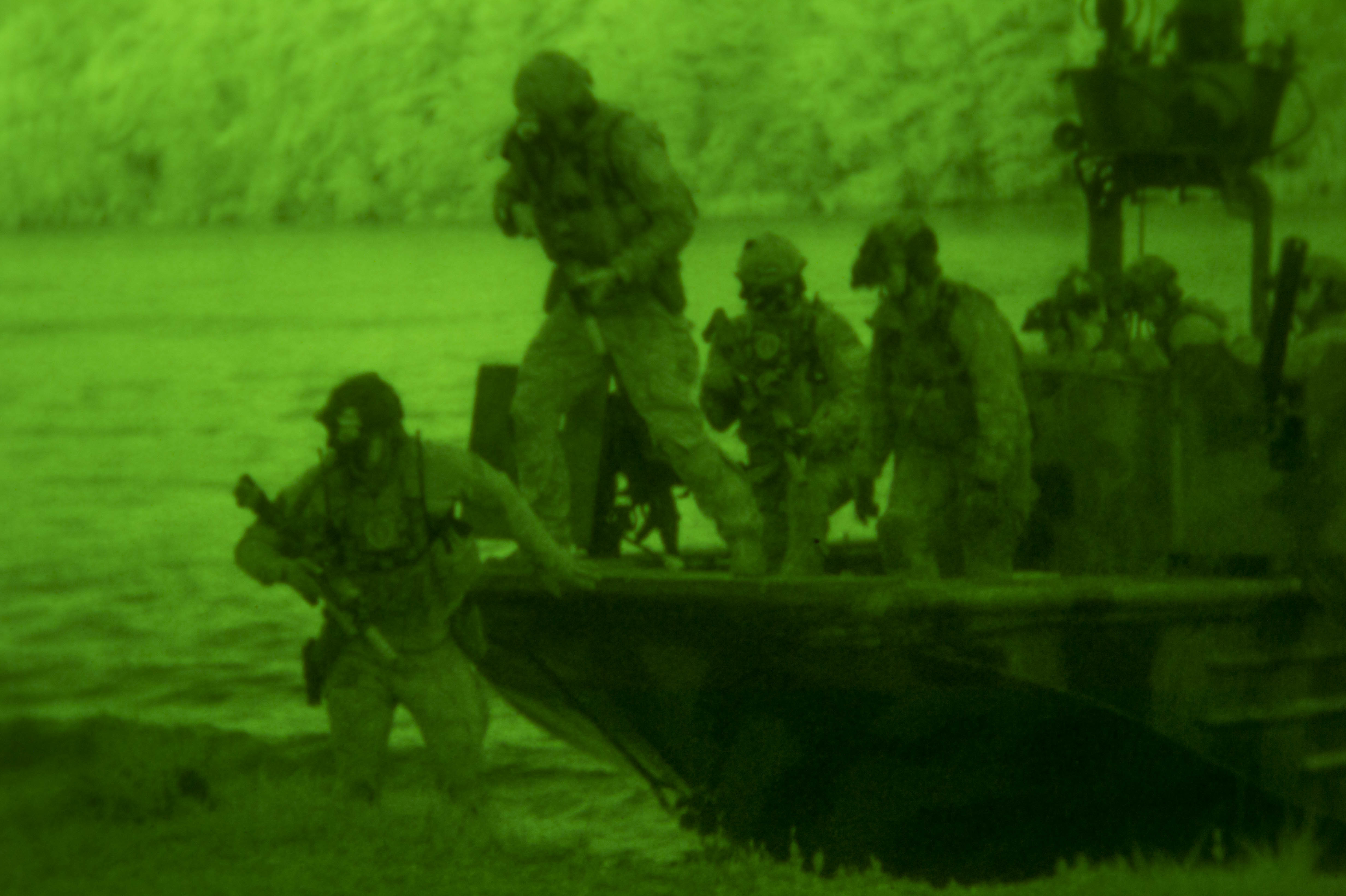
The integration of Navy SEALs and special boat teams into carrier strike group and amphibious ready group training exercises reflects naval special warfare’s renewed commitment to support the fleet and joint force and reinforce its own roots as naval commandos, said the top Navy SEAL on Tuesday.
The change in focus and lessons from two decades of counterinsurgency and counterterrorism missions are helping the NSW force work on the fleet’s current operational problems, Rear Adm. Hugh Wyman Howard said Tuesday during the WEST 2021 conference, cohosted by the U.S. Naval Institute and AFCEA.
“How we can be distinctive in providing support to the fleet in the strategic competition continuum, but also in crisis and conflict as an important, inside force for the Navy?” he said. “For us, it’s a race for relevancy.”
In the shift toward naval integration, NSW units are looking at innovations and are incorporating new technologies – including autonomous and unmanned systems, artificial intelligence and machine learning to expand the capabilities they bring to support future operations in the distributed maritime environment.
“We are rapidly orienting naval special warfare on the things that only we can do for the joint force,” Howard said. These kinds of NSW-type missions “are principally in the maritime. They are on and under the sea and into the littorals. This is where we have comparative advantage with our adversaries, and this must be our main focus.”
“We have great support from [U.S.] Special Operations Command as we look at the investments that we must make,” he added. Whether in crisis or conflict, “we’ve got to be up inside our adversaries in a way that complicates their targeting and extends the reach of long-range fires.”
Howard, who took command of Coronado, Calif.,-based Naval Special Warfare Command last September, said that recent integration by elements of East Coast and West Coast-based units to support Navy and Marine Corps units across multiple domains, to include maritime strike and cyber, “is really back to the future.”
As a junior SEAL officer in the 1990s, Howard did one of three deployments on aircraft carriers, including air wing support missions aboard the former USS John F. Kennedy (CV-67) in the Mediterranean during the Balkans conflict. Before the Sept. 11, 2001 terrorist attacks, SEAL platoons and special boat teams were regularly deployed as part of amphibious ready groups and trained with embarked Marine expeditionary units.
“We are the Navy’s naval commandos,” he said. “That’s what we are – and we understand our roots. We understand and have the relationships to evolve in the new concepts of how we can contribute. War gaming is critical.”
Howard said integrated exercises and experimentation “are critical to see where there are gaps where we could provide irregular and distinctive options to the fleet … It’s about complicating our adversaries’ targeting, undermining their confidence, setting the conditions early inside denied areas to extend joint fires and long-range fires … to attrit the enemy.”

Along with the training exercises and war games, naval special warfare is “putting the pressure on ourselves,” he said, by “embracing ‘Red’ threats.” That means integrating “peer-level opposition forces, peer-level detection capabilities into our exercises and our mission profiles and putting the pressure to evolve our tactics and our capabilities so that truly we are survivable, lethal, precise and distinctive for the joint force,” he added. “In balance with counterterrorism (missions) is the key point.”
The command is looking at ways to transform naval special warfare while maintaining a combat-ready special operations force heavily and continuously deployed for global war on terror missions and support to operations in Afghanistan, Iraq and Syria.
“We see an opportunity there to establish a reserve, at combat ready, to experiment for step changes and capability and development of new tactics at lower training risks,” Howard said. He’s working with SOCOM and the Pentagon on “how do we hold a sufficient reserve to accelerate the ways that we are experimenting for a very uncertain future.”
“We’ve got to learn faster,” he said. NSW units held back in reserve – not those part of the Navy Reserve – “will allow us to learn faster at a lower training risk … and then provide the agility to deploy for purpose and solve problems that we can’t see by the way our forces are currently allocated.”
NSW’s Reserve forces, meanwhile, remain positioned for rapid mobilization, he said. While a small portion compared to the active force, those units provide the force with depth in cyber and electronic warfare, areas “we need more of, and we are looking for new ways of leveraging that talent.”





